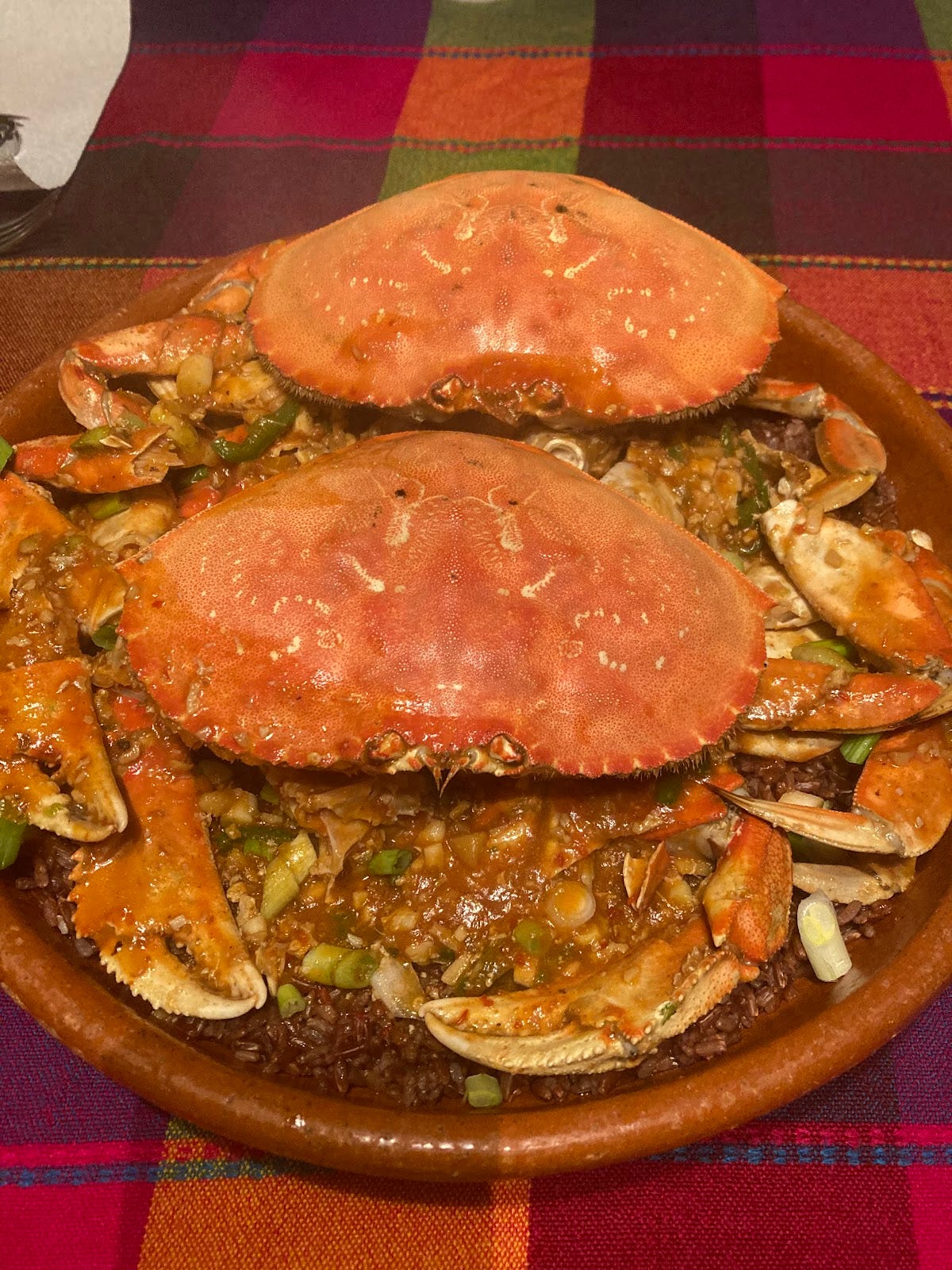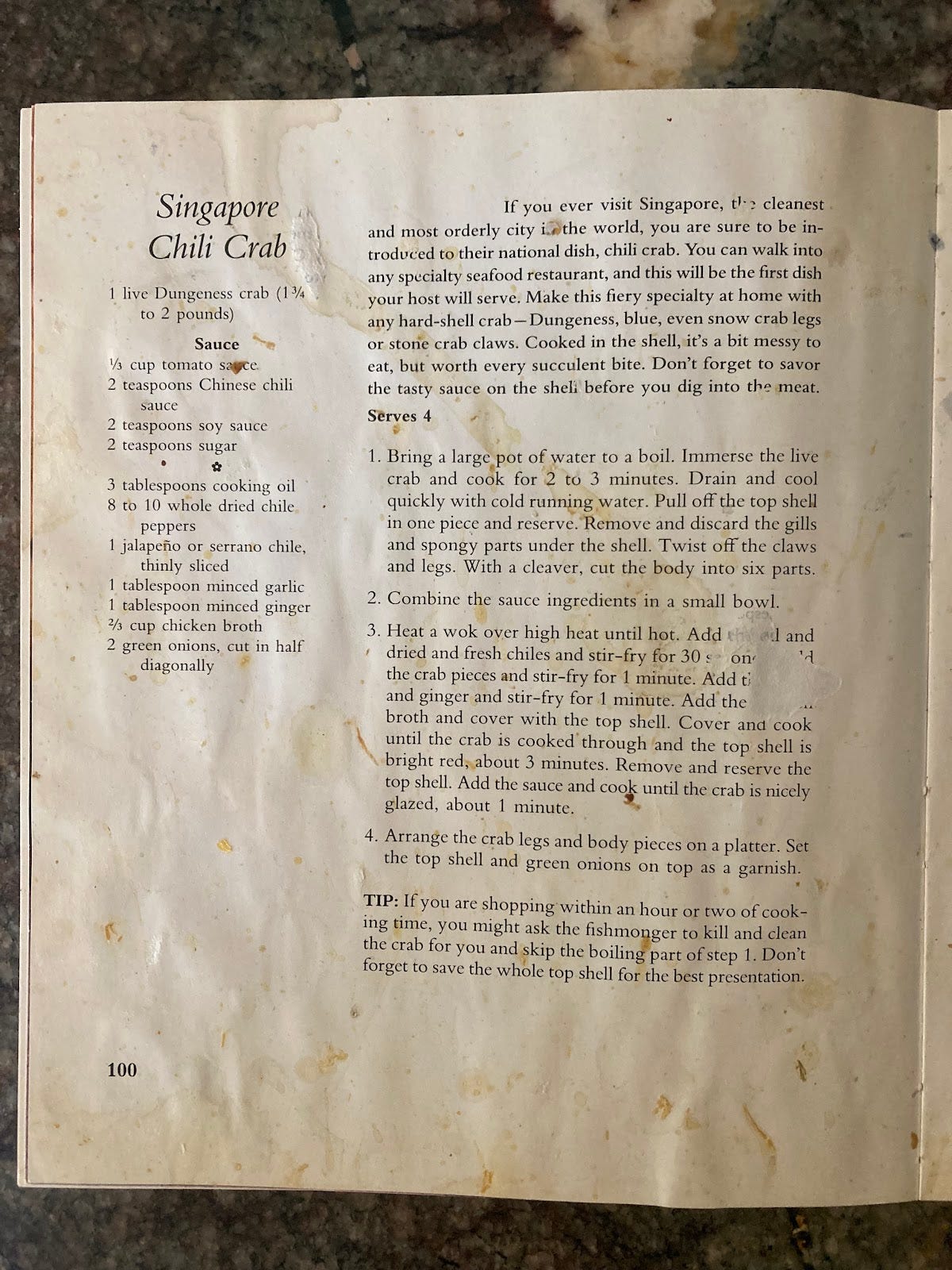Hello, friends! I hope your 2024 is off to a good start. Today, we’ve got the second installment in the Cookbook of the Month series written by Jake Welch. Jake made his debut around here with this wonderful essay about his mother’s cookbook collection. I was thrilled when he told me he had been thinking about chef and author Martin Yan, whom I’ve long admired. I’ll let Jake take it from here…
Cookbook of the Month: The Well-Seasoned Wok
by Jacob Michael Boynton Welch
If Yan can cook, so can you. That’s what Martin Yan told my mom and millions of others, including a young Maria, every week from his set kitchen in the KQED-PBS studios. That was the tagline, the name of the show, and the type of energy he puts into the world to this day. If there are pillars of American public access cooking television, he’s one of them.
If I can cook, so can you. That’s what my mother passed on to me, if not explicitly, then through the dishes she made and her obsession with getting them right. Sometimes that meant eating the same thing for a month, sometimes it meant the perfect roasted chicken whenever she felt like it. And that’s the base message of every cookbook everywhere, isn’t it? Cookbook authors like Maria are saying, “I tested these recipes, I’m doing it here on the page, you can do it too.”
Whether you actually can do it, whether you have the ingredients, the time, the equipment, are other worthwhile questions. Martin Yan’s recipe’s certainly ran into friction in the 1980’s when Yan Can Cook first started airing on PBS. A lot of Americans didn’t have Chinese grocery stores or access to the ingredients he would use. The liquor store in East Oakland wasn’t offering Bulduk ramen packets and two types of soy sauce in 1982. Neither was Safeway. They do now, and that’s probably partly due to the success of his show. In the beginning Yan always offered substitute ingredient options to the general public but by 1993, when he published his sixth cookbook, The Well-Seasoned Wok, things had changed quite a bit. In the introduction he talks about the increased availability of ingredients, the wider scope of this new book, and its mission to bring Southeast Asian flavors to the American palate.
Enter Singapore Chili Crab.
I’m not sure my mom ever cooked any other recipe out of this book. It’s the only one I remember, it’s the only one she remembers, and it’s the only one I want to tell you about. In our copy it’s page one-hundred and page one-hundred is completely covered in crab guts and chili sauce. I like to call these the dirty pages. The dirty pages tell you something about the cook and the appetites of the people they cook for. This page is telling you my family loves chili crab and my mom’s a messy cook. My dad, the dishwasher, will attest to that.
But before the dishes, there’s the dish. This dish, this sweet, savory, spicy, and succulent dish could change your life if you let it. Eating it at a curbside restaurant in Singapore is ideal but this recipe’s magic worked on our family for years. It still does. I made it with my mom a few weeks back, admittedly with Dungeness crab from Oregon, but crab season is in full effect now. We bought these at Tokyo Fish, but for the past few years my mom has taken to getting them fresh from the fishermen’s nets in San Francisco, on Al Scoma Way. You can do that too, and why not stop at Scoma’s for a bloody Mary and a few oysters while you’re at it?
Thank you so much, Jake! I LOVE that picture of the splattered page. Now I’m craving some Dungeness crab. Our local shop, Monterey Fish Market, has a big tank of water with crabs swimming in it. My three-year-old son, Arthur, always requests to go “see the turtles” and please nobody ever correct him, okay?
xo,
Maria







